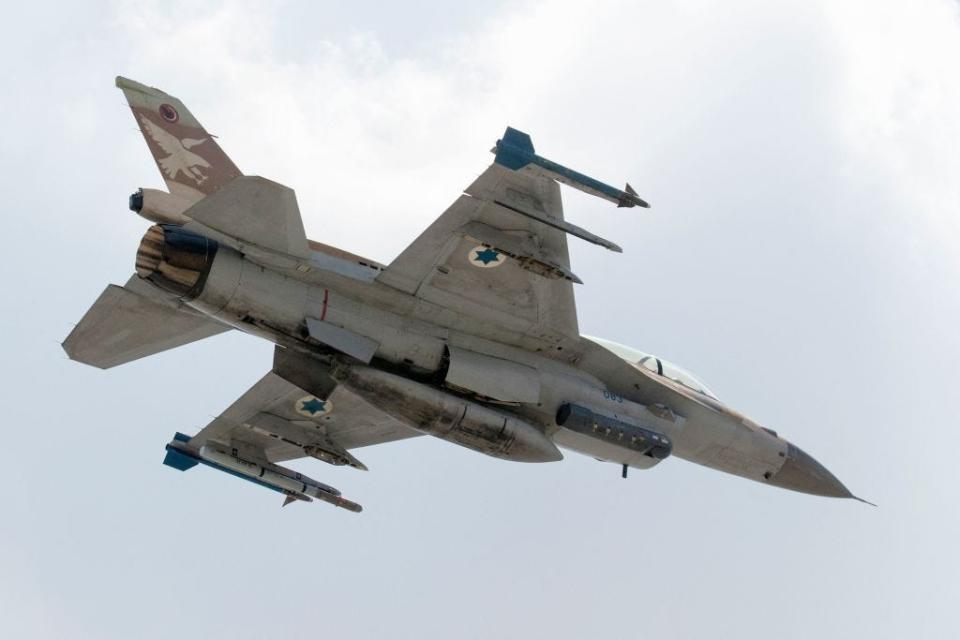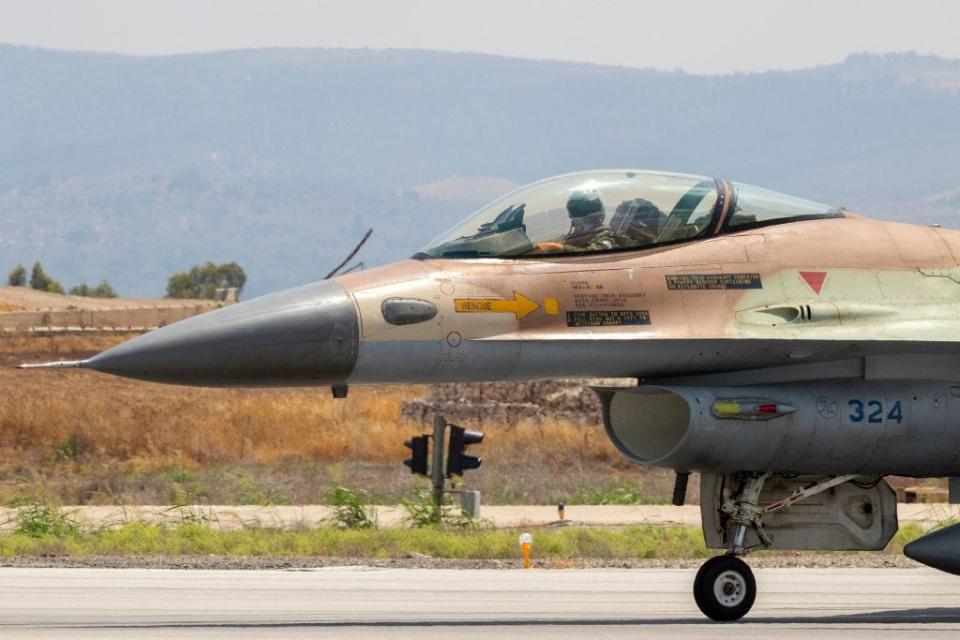How the Israeli Air Force once destroyed over 60 enemy jets and dozens of Soviet missile systems in battle without losing a single fighter
The Israeli Air Force achieved an unmatched air combat victory in the 1982 Lebanon War.
The battle, known as Operation Mole Cricket 19, saw over 60 enemy aircraft eliminated without a single Israeli loss.
Israel's aircraft, weapons, training, and strategic adaptations led to the historic win.
The Israeli Air Force (IAF) accomplished a feat unmatched in modern military aviation in June 1982, shooting down over 60 Syrian combat aircraft in the largest air battle of the jet age and destroying 29 of 30 surface-to-air missile (SAM) batteries without losing a single one of its fighter jets.
Operation Mole Cricket 19, as the famous engagement was designated, was aimed at destroying the Syrian SAMs positioned in Lebanon's Beqaa Valley. The operation took place during the first week of the 1982 Lebanon War that saw Israel and its Lebanese allies face off against Syria, the Palestinian Liberation Organization, and their allies in Lebanon.
The battle, which marked the first time a Soviet SAM battery was destroyed by a Western aircraft, had such an effect that the Soviet Union, whose aircraft Syria primarily used, sent military officials to investigate how Soviet aircraft and SAMs were defeated.
Many different factors came together to produce the stunning air combat victory.
Better aircraft, weapons, and training
At the time, the Syrian Air Force was mostly flying the outdated MiG-21, which had been introduced in 1959, and some Su-20 and MiG-23 export models. The MiG-21 fared well during the Vietnam War against American F-4s, but by 1982, it was significantly outclassed by the fourth-generation fighters of the IAF.
The IAF was primarily flying the recently introduced air superiority F-15 and F-16s fighters that would form the strike arm of the operation. It also had a smaller contingent of F-4s and Israeli-made Kfir jets that took on auxiliary roles.
The F-15 and F-16s were more maneuverable and could accelerate faster than Syria's jets. They had better radars that allowed them to fire missiles outside the detection range of the Syrian radars. The fourth-generation Israeli jets were also made much more lethal by the AIM-9L Sidewinder missile that could be fired from any angle. The Sidewinder accounted for most of the kills.

In contrast, Syrian jets used older K-13 missiles that had a much shorter operational range than Israel's AIM-9L. And the MiG-21s' warning systems could only pick up incoming missiles approaching from their nose and tail, leaving them otherwise "blind."
Furthermore, Israeli pilots and ground crews had significant combat experience. They had been practicing attacks against SAMs, and Israeli pilots had been flying over Beqaa Valley for some years becoming familiar with the area.
In contrast, Syrian SAM crews performed horribly. They hadn't moved their SAM batteries in months, allowing the IAF to pinpoint their locations before the battle, and they had placed them in vulnerable locations. On the day of the fight, the Syrians used smoke to conceal their batteries rather than camouflaging them, which, instead, made their locations more visible to Israeli jets. They also deployed the mobile SAM systems in a fixed configuration.
But Israel's technological edge and the training its personnel had received weren't the only deciding factors, and the IAF had to learn from past mistakes to achieve victory.
Adapting to win
During the Yom Kippur War nine years before, Egyptian SAM batteries shot down 42 Israeli aircraft, 14% of the IAF's fleet, in the conflict's first two days. The loss led the IAF to recognize the importance of suppressing and destroying enemy air defenses.
For Operation Mole Cricket 19, it used UAVs to identify the Syrian batteries' radar signatures months before the battle. Day of, Israel used UAVs to mimic the radio signature of Israeli jets, thereby tricking the Syrian batteries into activating their radars to take them down. This allowed Israeli jets, with targeting assistance from UAVs, to destroy the SAMs using anti-radiation missiles.

Additionally, Israel had superior Command, Control, and Communications (C3) capabilities.
Israel boosted its own C3 abilities with Grumman E-2C Hawkeye airborne warning and control system (AWACS) aircraft. Operation Mole Cricket 19 was the first time modern AWACS were used in combat, assisting Israeli fighters with targeting and battlefield control.
And it actively degraded Syrian C3 capabilities by employing aircraft with jammers to disrupt Syrian radar and communications. This further reduced the effectiveness of the SAF's older aircraft by preventing them from receiving targeting assistance and battlefield updates from the ground.
Highlighting the effectiveness of Israel's tactic, a Western observer, cited by a RAND Corporation report on the battle, said, "I watched a group of Syrian fighter planes fly figure-eights. They just flew around and around and obviously had no idea what to do next."
Lastly, Israel protected its own communications by equipping its fighters with electronic countermeasure pods and developed a variable frequency radio system to prevent Syrian forces from identifying and jamming it.
The outcome of the battle was a total Israeli victory, and due to its one-sided outcome, Operation Mole Cricket 19 came to be known as the "Beqaa Valley Turkey Shoot."
IAF would go on to destroy approximately 20 more Syrian jets in the days following the operation, bringing the total to more than 80. Though it lost no jets during the operation, it suffered losses later, but those only amounted to one F-4, one old A-4 Skyhawk, and two helicopters during the entire conflict.
Read the original article on Business Insider

